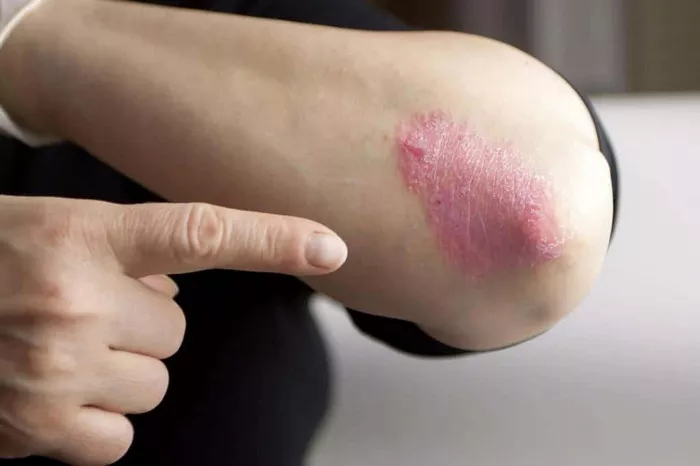Hidradenitis Suppurativa (HS) is a chronic inflammatory skin condition that affects the hair follicles in areas where skin rubs together, such as the armpits, groin, buttocks, and under the breasts. Often misunderstood and misdiagnosed, HS can significantly impact a person’s quality of life due to painful abscesses, nodules, and tunnels that form under the skin. To truly understand HS, it’s essential to explore how this condition manifests beneath the surface and how it affects patients on a daily basis.
The Pathophysiology of HS
HS begins with blockages in hair follicles, typically due to factors like excess sweating, hormonal changes, or genetic predisposition. This blockage leads to inflammation, which can progress to the formation of painful nodules and abscesses. In severe cases, these abscesses can rupture, leading to the formation of sinus tracts or tunnels under the skin, which further complicates treatment and healing.
The exact cause of HS is not fully understood, but it is believed to involve a dysregulation of the immune system and possibly genetic factors. Studies have suggested a role for inflammation, microbiome alterations, and hormonal influences in the development and persistence of HS.
Clinical Presentation
The clinical presentation of HS varies widely among individuals and can range from mild to severe. In its early stages, HS may appear as small, pimple-like bumps or boils that are painful to the touch. Over time, these lesions can enlarge and become more widespread, affecting larger areas of the body. The affected skin often feels warm, tender, and may be accompanied by itching or burning sensations.
As the condition progresses, the formation of interconnected tunnels or sinus tracts (known as fistulas) beneath the skin becomes more characteristic. These tunnels can result in chronic drainage of pus and blood, leading to foul odor and significant discomfort for patients. The presence of fistulas is a hallmark feature of severe HS and can greatly impact a person’s physical and emotional well-being.
Diagnostic Challenges
Diagnosing HS can be challenging due to its resemblance to other skin conditions such as boils, acne, or folliculitis. The diagnosis is usually based on clinical evaluation, medical history, and sometimes biopsy findings. Dermatologists and healthcare providers play a crucial role in recognizing the characteristic features of HS and distinguishing it from other skin disorders.
Impact on Quality of Life
Beyond the physical symptoms, HS has a profound impact on the quality of life of affected individuals. Chronic pain, difficulty moving, and limitations in daily activities are common. Many patients experience social isolation and psychological distress due to the visible nature of the lesions and the chronicity of the condition. Depression, anxiety, and decreased self-esteem are prevalent among those living with HS, highlighting the need for comprehensive care that addresses both the physical and emotional aspects of the disease.
SEE ALSO: Why Does Hidradenitis Suppurativa Itch?
Treatment Approaches
Treatment for HS aims to reduce symptoms, prevent complications, and improve quality of life. Management typically involves a combination of medical therapies and sometimes surgical interventions, tailored to the severity and extent of the disease.
1. Medical Therapies: Topical and systemic antibiotics, anti-inflammatory medications, and immunosuppressants are commonly used to control inflammation and prevent infection. Biologic therapies targeting specific immune pathways have shown promise in treating moderate to severe HS.
2. Surgical Interventions: For advanced cases or recurrent abscesses, surgical procedures such as incision and drainage, laser therapy, or excision of affected tissue may be necessary. These procedures aim to remove diseased tissue and improve healing outcomes.
3. Lifestyle Modifications: Managing HS often involves lifestyle changes such as weight management, smoking cessation (as smoking worsens HS), and gentle skin care practices to minimize irritation and friction.
4. Psychosocial Support: Addressing the emotional impact of HS is crucial. Support groups, counseling, and patient education can help individuals cope with the challenges of living with a chronic skin condition.
Future Directions
Research into HS continues to evolve, with ongoing studies exploring new treatment modalities and understanding the underlying mechanisms of the disease. Advances in genetics, immunology, and microbiology hold promise for more targeted therapies that could improve outcomes and quality of life for patients with HS.
Conclusion
Hidradenitis Suppurativa is a complex and often debilitating skin condition characterized by painful nodules, abscesses, and tunnels under the skin. Understanding the pathophysiology and clinical presentation of HS is essential for accurate diagnosis and effective management. By addressing both the physical symptoms and the psychosocial impact of the disease, healthcare providers can improve outcomes and support individuals living with HS in reclaiming their quality of life.
As research progresses and awareness grows, there is hope for better treatments and ultimately a cure for this challenging condition. Continued education, advocacy, and support are crucial in improving the lives of those affected by HS and advancing the field of dermatology.
In conclusion, while HS may present differently under the skin than what is visible on the surface, its impact is profound and warrants a multidisciplinary approach to care that considers both the medical and emotional needs of patients.
Related Topics:

























